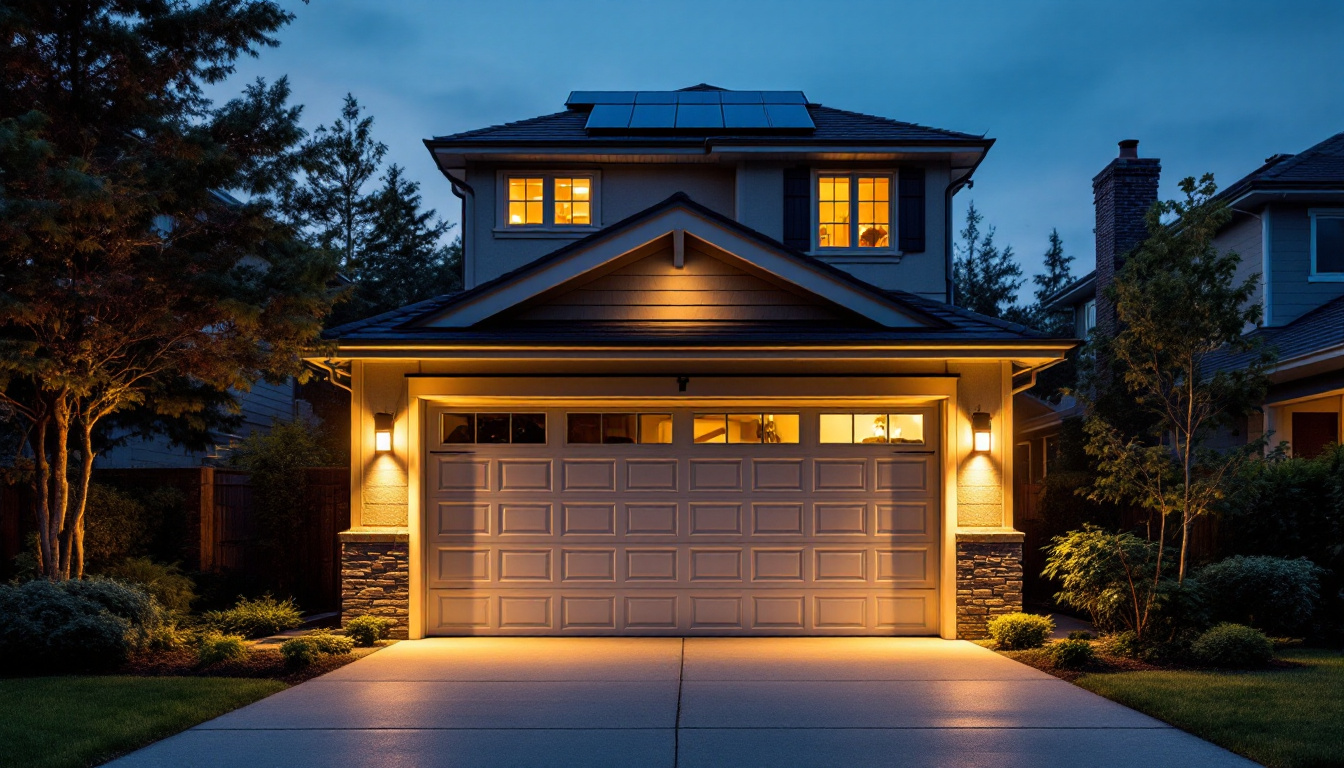
As the demand for innovative lighting solutions continues to grow, LED strip lights have emerged as a popular choice for both residential and commercial applications. Their versatility, energy efficiency, and aesthetic appeal make them an attractive option for lighting contractors looking to enhance their projects. This article delves into the various approaches that smart lighting contractors can adopt when integrating LED strip lights into ceiling designs.
LED strip lights, also known as LED tape lights, are flexible circuit boards populated with light-emitting diodes (LEDs). They come in various lengths, colors, and brightness levels, which makes them suitable for a wide range of applications. Contractors can use them for accent lighting, task lighting, or even as primary light sources in certain settings.
One of the key advantages of LED strip lights is their ability to be cut and customized to fit specific spaces. This flexibility allows contractors to create unique lighting designs that can enhance the overall ambiance of a room. Moreover, with advancements in technology, many LED strip lights are now compatible with smart home systems, enabling users to control their lighting remotely and customize their settings.
When selecting LED strip lights, contractors must consider the different types available on the market. The most common types include single-color, RGB (red, green, blue), and RGBW (RGB plus white) strips. Single-color strips are ideal for straightforward applications where a consistent hue is needed, while RGB strips offer the ability to change colors and create dynamic lighting effects.
RGBW strips take it a step further by incorporating a dedicated white LED, allowing for a broader spectrum of color temperatures. This versatility can be particularly beneficial in settings where both vibrant colors and warm whites are desired, such as in hospitality or retail environments.
LED strip lights can be seamlessly integrated into various ceiling designs, providing both functional and aesthetic benefits. One popular application is in cove lighting, where the strips are installed in recessed areas along the perimeter of the ceiling. This creates a soft, indirect light that can enhance the architectural features of a room while providing ambient illumination.
Another application is in drop ceilings, where LED strips can be installed along the edges or within the grid. This can create a modern look while also providing effective task lighting in areas such as offices or kitchens. Additionally, contractors can use LED strips to highlight architectural elements, such as beams or moldings, adding depth and interest to the ceiling.
Proper installation is crucial to achieving the desired lighting effects with LED strip lights. Contractors must consider factors such as power supply, heat dissipation, and placement to ensure optimal performance and longevity of the lights.
Before installation, it is essential to plan the layout carefully. This includes determining the length of the strips needed, the location of power sources, and the method of attachment. Most LED strip lights come with an adhesive backing, but for more permanent installations, additional mounting hardware may be necessary.
One of the most critical aspects of installing LED strip lights is ensuring that the power supply is adequate. Each strip has a specific voltage requirement, typically 12V or 24V, and contractors must select a power supply that matches this requirement while providing enough wattage to support the total length of the strips being installed.
Additionally, it is essential to consider the distance between the power supply and the LED strips. Voltage drop can occur over long distances, leading to uneven brightness. To mitigate this, contractors may need to use thicker gauge wire or install additional power supplies at various points along the strip.
LEDs are known for their energy efficiency, but they still generate some heat during operation. Proper heat management is essential to prolong the lifespan of the lights and maintain their performance. Contractors should ensure that the LED strips are installed on surfaces that can dissipate heat effectively, such as aluminum channels or heat sinks.
In addition, it is advisable to avoid enclosing the strips in tight spaces without ventilation, as this can lead to overheating and reduced lifespan. Ensuring adequate airflow around the strips will help maintain optimal operating temperatures and performance.
With the rise of smart home technology, integrating LED strip lights into a smart lighting system can significantly enhance the user experience. Smart lighting allows users to control their lights through mobile apps, voice commands, or automation systems, providing convenience and flexibility.
Contractors should familiarize themselves with the various smart lighting options available, such as Wi-Fi, Zigbee, and Z-Wave technologies. Many modern LED strip lights come with built-in smart features, allowing for easy integration into existing smart home ecosystems.
Integrating LED strip lights into a smart lighting system offers numerous benefits. Users can easily control the brightness and color of their lights, set schedules, and create custom lighting scenes for different occasions. This level of control can enhance the overall ambiance of a space and improve energy efficiency by allowing users to turn off lights when they are not needed.
Moreover, smart lighting can be programmed to respond to specific triggers, such as motion sensors or time of day. For instance, LED strip lights can automatically brighten when someone enters a room or dim as the sun sets, providing a seamless transition between natural and artificial light.
While integrating smart technology into lighting designs can offer significant advantages, it is not without its challenges. Compatibility issues may arise when trying to connect different devices or systems. Contractors must ensure that the LED strip lights selected are compatible with the chosen smart home system.
Another challenge is the potential for connectivity issues, especially in larger spaces where Wi-Fi signals may be weak. In such cases, using a mesh network or range extenders can help maintain a stable connection. Additionally, providing clients with clear instructions on how to use their new smart lighting system can enhance their satisfaction and overall experience.
When incorporating LED strip lights into ceiling designs, various aesthetic and functional considerations come into play. The goal is to create a cohesive look that enhances the overall design of the space while providing effective lighting solutions.
Contractors should consider the color temperature of the LED strips, as this can significantly impact the mood of a room. Warmer temperatures (2700K-3000K) create a cozy and inviting atmosphere, while cooler temperatures (4000K-5000K) can promote alertness and productivity. Selecting the right color temperature for the intended use of the space is essential.
In addition to color temperature, the choice of color and brightness levels can dramatically affect the ambiance of a room. RGB and RGBW strips offer the flexibility to create dynamic lighting effects that can change throughout the day or for different occasions. Contractors should work closely with clients to understand their preferences and how they envision using the lighting in their space.
Moreover, it is essential to consider the brightness level of the LED strips. Too much brightness can be overwhelming, while too little can lead to insufficient illumination. Conducting a lighting analysis can help determine the appropriate brightness levels needed for various tasks within the space.
To achieve a cohesive design, contractors should consider how LED strip lights will interact with other lighting sources in the room. Layering different types of lighting, such as ambient, task, and accent lighting, can create a balanced and inviting atmosphere. LED strip lights can serve as an excellent complement to other fixtures, providing additional depth and dimension to the overall design.
Furthermore, the placement of LED strips should be carefully planned to avoid creating harsh shadows or overly bright spots. Thoughtful positioning can enhance the architectural features of the ceiling while ensuring that the lighting serves its intended purpose effectively.
Proper maintenance is essential for ensuring the longevity of LED strip lights. While they are known for their durability, certain factors can impact their lifespan, including dust accumulation and environmental conditions. Regular cleaning and inspection can help maintain optimal performance.
Contractors should educate clients on the importance of keeping the LED strips clean and free from obstructions. Simple maintenance tasks, such as dusting the strips and checking for any signs of wear, can significantly extend their lifespan and ensure consistent performance.
As technology continues to advance, upgrading LED strip lights may become necessary to take advantage of improved efficiency or features. Contractors should stay informed about the latest developments in LED technology and be prepared to recommend upgrades to clients when appropriate.
Replacing LED strips is typically straightforward, as most installations allow for easy removal and reinstallation. However, proper disposal of old strips is important to minimize environmental impact. Contractors should encourage clients to recycle old LED strips whenever possible, contributing to sustainable practices in the industry.
LED strip lights offer a versatile and innovative solution for lighting contractors looking to enhance their projects. By understanding the various types of LED strips available, mastering installation techniques, and integrating smart technology, contractors can create stunning and functional lighting designs that meet the needs of their clients.
With thoughtful design considerations and a focus on maintenance, LED strip lights can provide long-lasting and efficient lighting solutions that elevate any space. As the industry continues to evolve, staying informed and adapting to new technologies will be key to success in the world of lighting design.
Ready to take your lighting projects to the next level? LumenWholesale is your trusted partner, offering an extensive range of high-quality, spec-grade LED strip lights at unbeatable wholesale prices. Say goodbye to local distributor markups and hello to superior lighting products that meet the highest industry standards. With free shipping on bulk orders, you can enjoy premium lighting solutions at the best value — all without hidden fees or compromises. Elevate your lighting designs today and experience the best in wholesale lighting with LumenWholesale.

Discover the latest strategies and proven techniques for lighting contractors to effectively illuminate garages with outdoor solar lights.

Explore the top challenges lighting contractors face when integrating motion detector outlets.

Discover how LED dusk to dawn lights can revolutionize your outdoor lighting solutions.

Discover essential tips to prevent grip lock mishaps in your lighting projects.